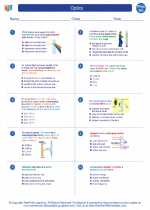Mechanical Waves
Mechanical waves are a type of wave that require a medium to travel through. They are caused by a disturbance in the medium, which then carries energy from one location to another. There are two main types of mechanical waves: transverse waves and longitudinal waves.
Transverse Waves
Transverse waves are characterized by the oscillation of particles perpendicular to the direction of wave propagation. This means that the individual particles of the medium move up and down or side to side as the wave travels through the medium.
Longitudinal Waves
Longitudinal waves are characterized by the oscillation of particles parallel to the direction of wave propagation. In a longitudinal wave, the individual particles of the medium move back and forth in the same direction that the wave is traveling.
Wave Properties
Waves have several important properties, including wavelength, frequency, amplitude, and speed. Wavelength is the distance between two consecutive points in a wave that are in phase. Frequency is the number of complete wave cycles that occur in one second. Amplitude is the maximum displacement of a particle from its rest position. Speed of a wave is given by the formula: speed = frequency × wavelength.
Wave Interference
When two or more waves meet, they interfere with each other. If the crests of two waves coincide, they undergo constructive interference and the resulting wave has an increased amplitude. If the crest of one wave coincides with the trough of another wave, they undergo destructive interference and the resulting wave has a decreased amplitude.
Study Guide
- Define mechanical waves and provide examples of transverse and longitudinal waves.
- Explain the properties of waves, including wavelength, frequency, amplitude, and speed.
- Describe wave interference and the effects of constructive and destructive interference.
- Calculate the speed of a wave given its frequency and wavelength.
- Discuss the applications of mechanical waves in everyday life, such as sound waves and seismic waves.



